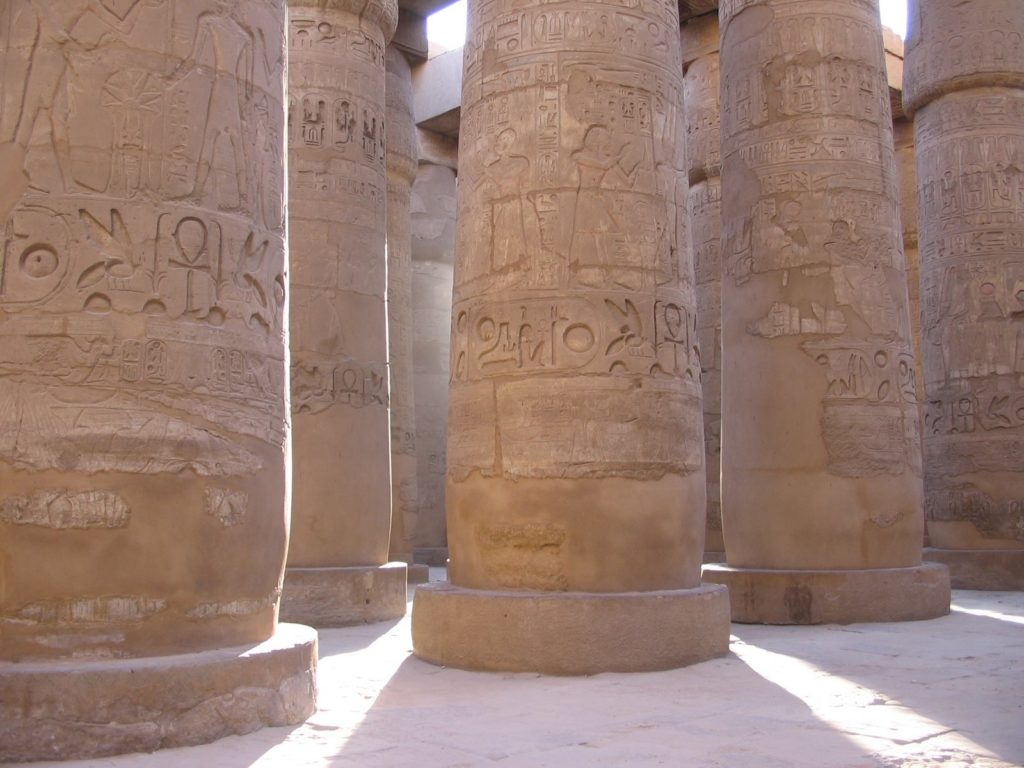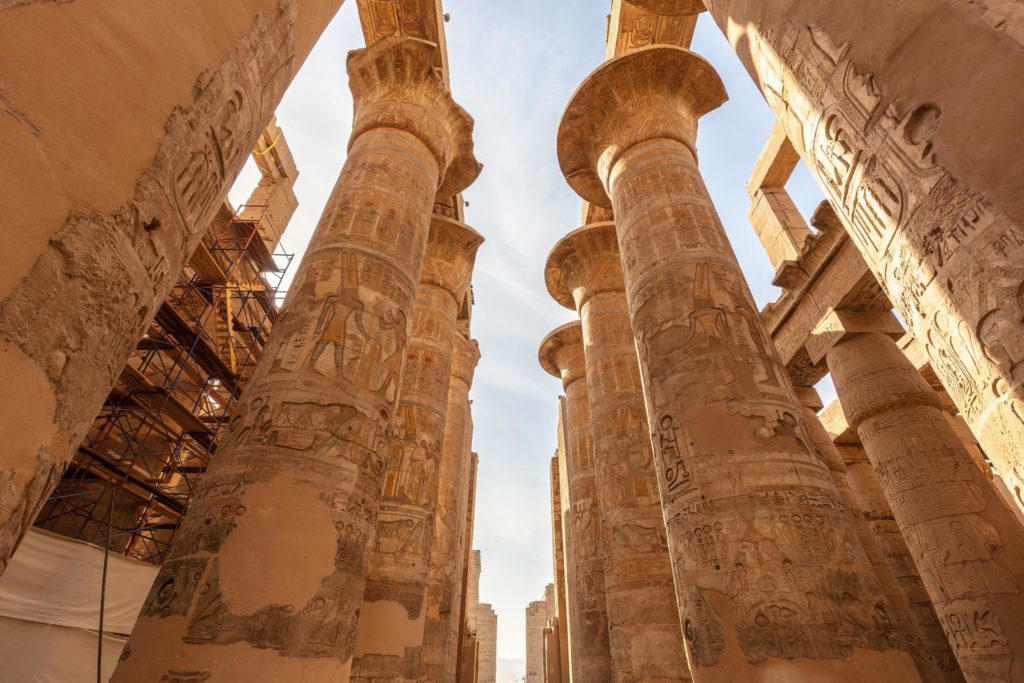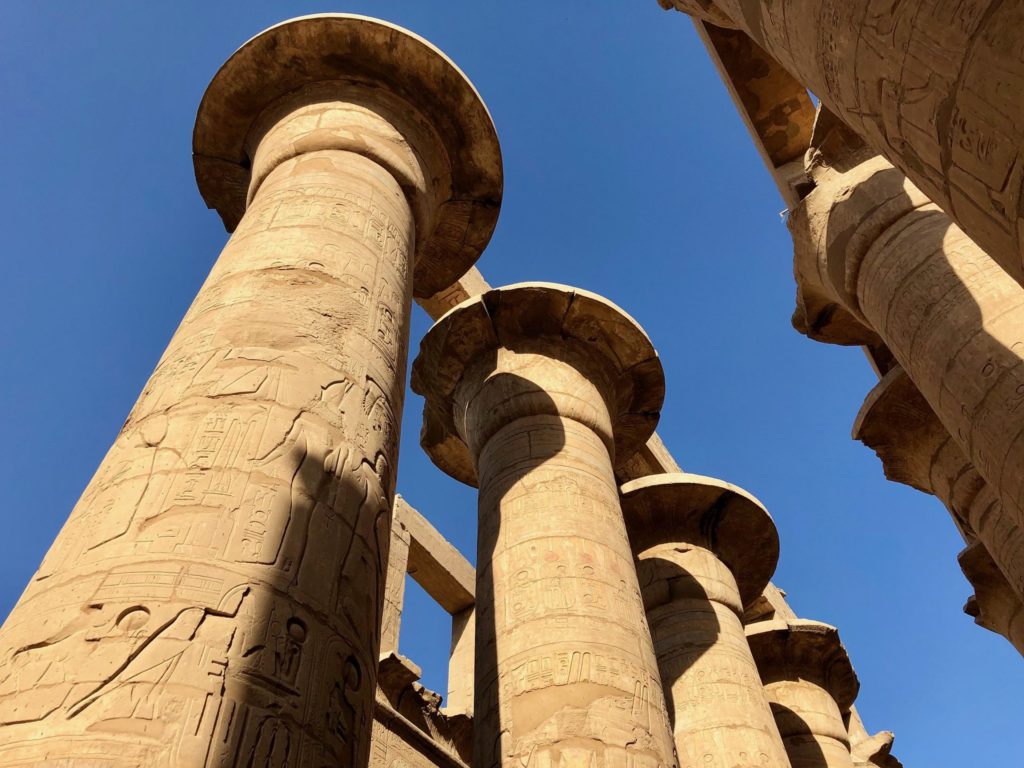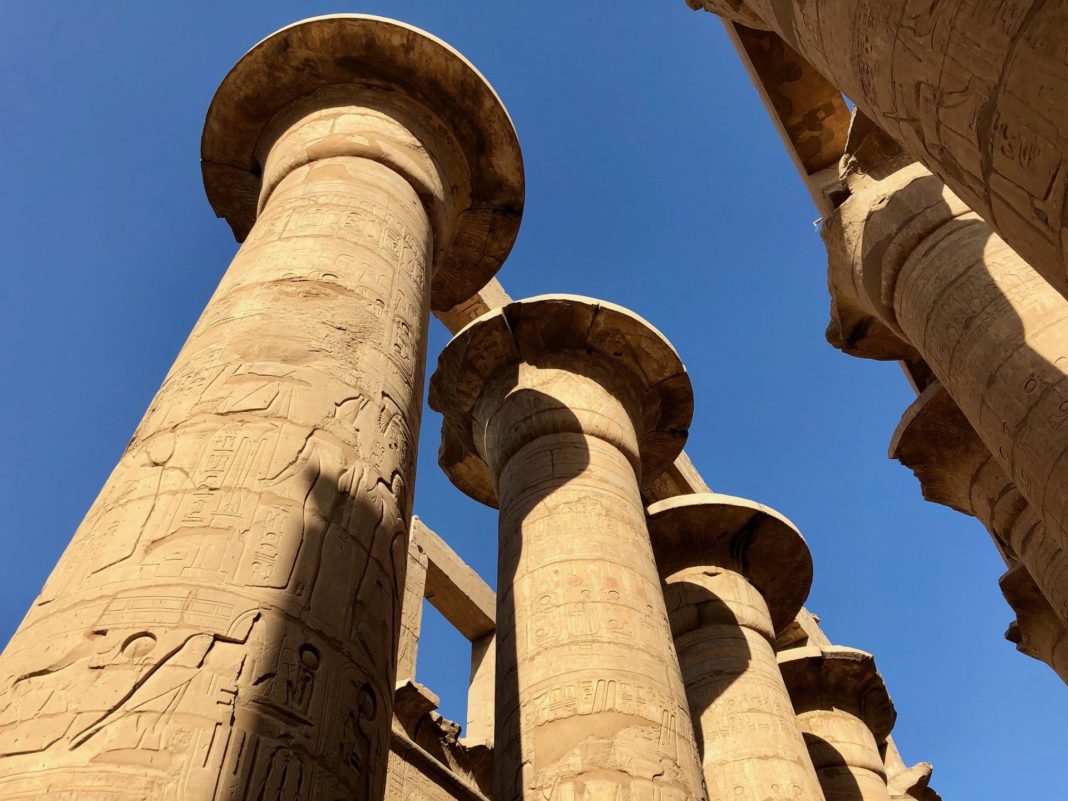The Great Hypostyle Hall is located within the Karnak Temple Complex, in the Precinct of Amon-Re. It is one of the most visited monuments of Ancient Egypt. The structure was built around the 19th Egyptian Dynasty (c. 1290–1224 BC). Its design was initially instituted by Hatshepsut, at the North-west chapel to Amun on the upper terrace of Deir el-Bahri. The name refers to the hypostyle architectural pattern.

Great Hypostyle Hall is the world’s largest hypostyle (pillared) hall. It covers an area of 5,000 m2. The roof, now fallen, was supported by 134 columns in 16 rows; the two middle rows are higher than the others (being 10 meters in circumference and 24 meters high).

The 134 papyrus columns represent the primeval papyrus swamp from which Atum, a self-created deity, arose from the waters of Nun at the beginning of creation.

The hall was not constructed by Horemheb, or Amenhotep III as earlier scholars had thought but was built entirely by Seti I who engraved the northern wing of the hall with inscriptions. Decoration of the southern wing was completed by the 19th dynasty pharaoh Ramesses II.
Although the multiple, usually large, pillars naturally consumed much of the floor space of such halls, this drawback was turned to advantage when the columns were carved with heroic or religious motifs. The design has rarely been used in more recent architecture because of more effective means of roof support.
According to the Internet















